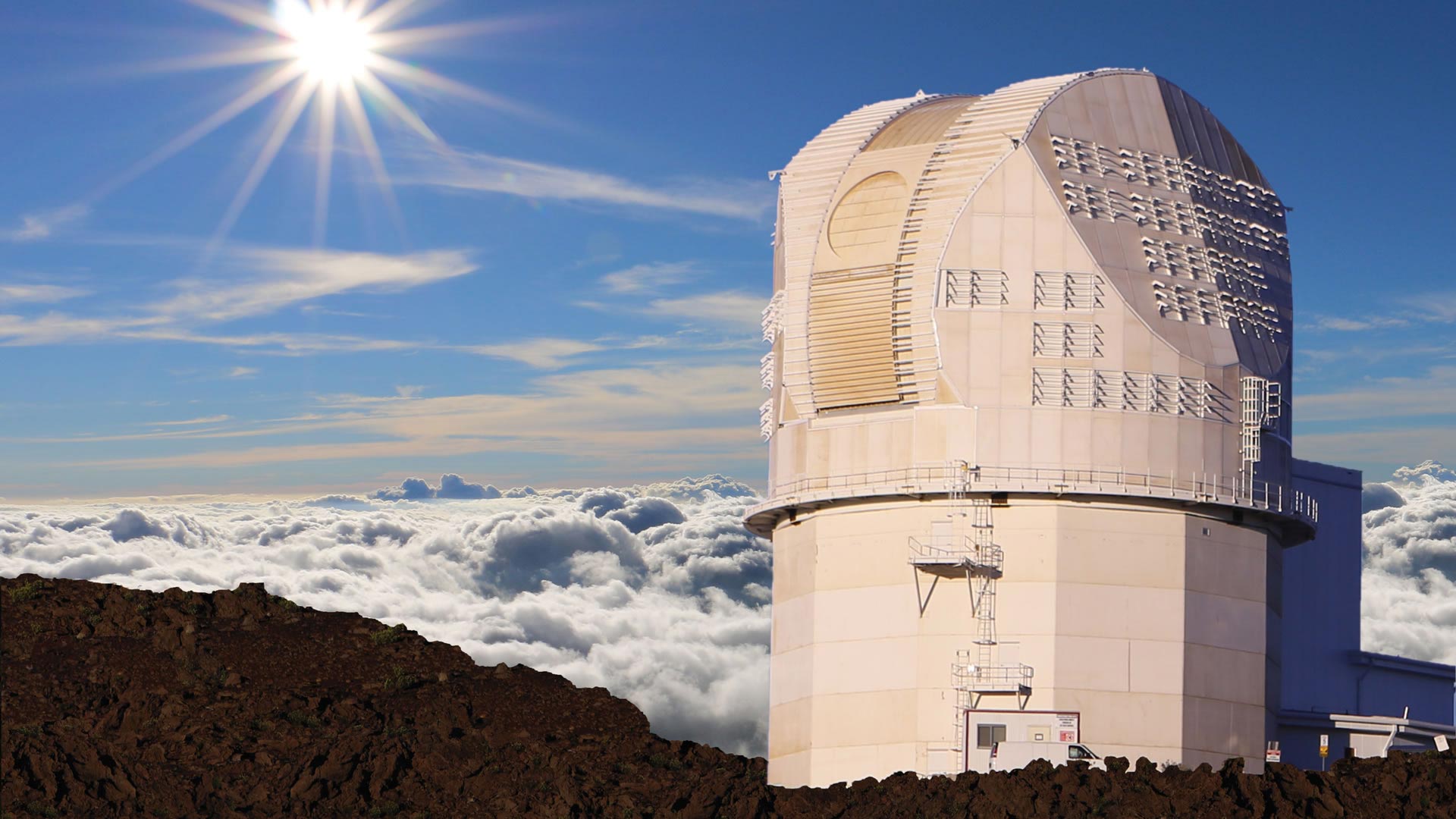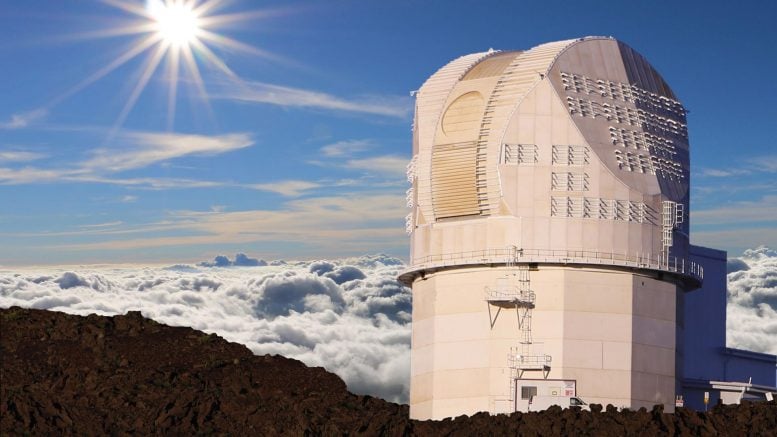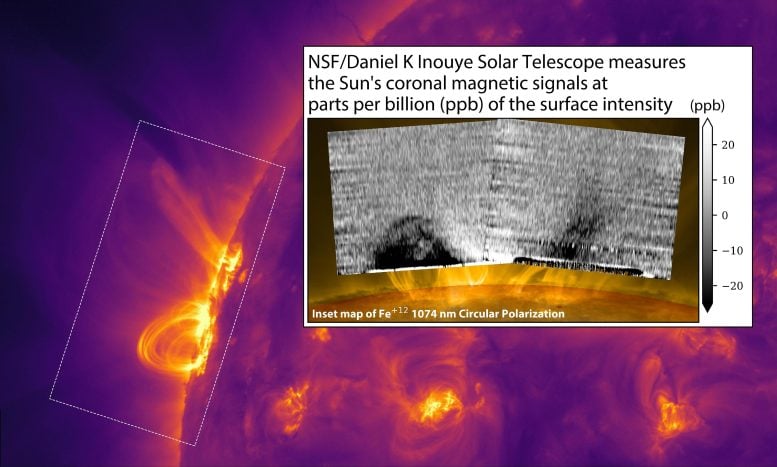

The NSF Daniel K. Inouye Solar Telescope has achieved a significant breakthrough by mapping the magnetic field in the solar corona, enhancing our understanding of space weather and its effects on Earth.
Its technology provides unprecedented details into the magnetic properties of the Sun’s outer atmosphere, pivotal for predicting solar storms and protecting Earth’s technological infrastructure.
The Inouye Solar Telescope
The U.S. National Science Foundation (NSF) Daniel K. Inouye Solar Telescope, the world’s most powerful solar telescope, designed, built, and operated by the NSF National Solar Observatory (NSO), achieved a major breakthrough in solar physics by directly mapping the strength of the magnetic field in the solar corona, the outer part of the solar atmosphere that can be seen during a total eclipse. This breakthrough promises to enhance our understanding of space weather and its impact on Earth’s technology-dependent society.

Unveiling the Solar Corona’s Magnetic Mysteries
The Sun’s magnetic field generates regions in the Sun’s atmosphere, often rooted by sunspots, that store vast amounts of energy that fuel explosive solar storms and drive space weather. The corona, the Sun’s outer atmosphere, is a superheated realm where these magnetic mysteries unfold. Mapping coronal magnetic fields is essential to understanding and predicting space weather – and to protect our technology in Earth and space.
The NSF Daniel K. Inouye Solar Telescope presents its first map of the solar coronal magnetic field signals as measured using the Zeeman Effect. The Zeeman Effect polarizes the coronal emission, which requires the advancements of the Inouye to measure as its signals are only a few parts per billion of the Sun’s surface brightness. Credit: NSF/NSO/AURA
Implications for Earth’s Technological Resilience
Earth’s magnetic field shields us from solar winds, protecting our atmosphere, and making life possible. However, the electromagnetic fields and energetic particles from extreme solar eruptions can disrupt satellites, power grids, and other systems we need in our increasingly technological society. Understanding these dynamic interactions, which change on timescales ranging from days to centuries, is crucial for safeguarding our infrastructure and current way of life.
Measuring the corona’s magnetic properties has long challenged astronomers and the limits of technology. Today, the Inouye Solar Telescope is the most advanced facility designed to study the corona, and has made a crucial first step in resolving these mysteries by producing its first coronal magnetic field maps – the most detailed to date.
A New Era in Solar Physics
Since the 1950s, solar physicists have mapped the magnetic fields on the Sun’s surface, providing valuable insights. However, maps of the magnetic field in the zones above the surface, like the corona, have long been sought as it is in these locations that solar storms originate. The Inouye, located near the summit of Maui’s Haleakalā in Hawai’i, now provides the capabilities to meet this critical need.
The NSF Daniel K. Inouye Solar Telescope extends our abilities to understand the physics of the solar corona. This animation first shows the evolving solar surface, as routinely imaged by NASA’s Solar Dynamics Observatory. Here, the temperatures are about 6000 degrees Celsius. A map of the surface magnetic fields follows, where one can notice concentrated regions of magnetism (black and white regions). That magnetic field extends in three dimensions upwards where the solar corona forms, creating bright hot gas at millions of degrees. The Inouye is now able to map the magnetic fields in the coronal itself, which provides critical insight into how the corona heating and the entrapment and release of magnetic energy occurs. Credit: NSF/NSO/AURA
Breakthrough in Solar Observation
The Inouye has created its first detailed magnetic field maps of the solar corona using the Zeeman Effect, which measures magnetic properties by observing spectral line splitting. Spectral lines are distinct lines that appear at specific wavelengths in the electromagnetic spectrum, representing the light absorbed or emitted by atoms or molecules. These lines act like “fingerprints,” as they are unique to each atom or molecule, allowing scientists to identify the chemical composition and physical properties of celestial objects by looking at their spectra.
When exposed to a magnetic field, like in the Sun, these lines split, which gives us an insight into the object’s magnetic properties. Previous attempts at detecting these signals, last reported two decades ago (Lin et al. 2004), lacked the detail and regularity needed for extensive scientific investigation. Today, the Inouye’s unmatched capabilities allow for detailed, regular studies of these crucial signals.
Reference: “Mapping the Sun’s coronal magnetic field using the Zeeman effect” by Thomas A. Schad, Gordon J.D. Petrie, Jeffrey R. Kuhn, Andre Fehlmann, Thomas Rimmele, Alexandra Tritschler, Friedrich Woeger, Isabelle Scholl, Rebecca Williams, David Harrington, Alin R. Paraschiv and Judit Szente, 11 September 2024, Science Advances.
DOI: 10.1126/sciadv.adq1604